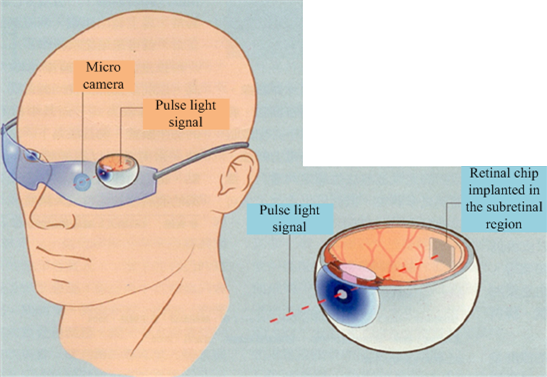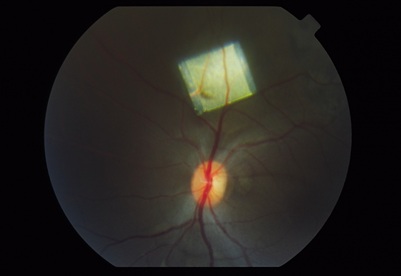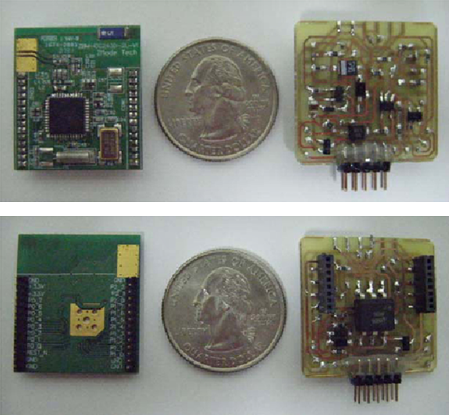
 Research Topics
Research Topics
The two main research focuses of this center are the electronic retinal prosthesis and electronic system for epilepsy control.
Electronic Retinal Prosthesis
Although the photoreceptors of patients experiencing blindness caused by retinitis pigmentosa and age-related macular degeneration are degenerated and fail to sense light stimuli, most of the reset of retinal cells are still alive and function normally. Therefore, implantable artificial retinas that use electronic components to replace photoreceptors have become the most feasible treatment for these two diseases.
The artificial retinal chip developed by the research team at the Biomimetic Systems Research Center at the NCTU use solar-cell technologies in their retinal prosthesis. Therefore, the chip does not require external power from batteries or cables for interconnections so that it can be fully implanted into the subretinal region. The chip contains photodiodes that are light sensitive and can generate electronic current signals to stimulate the remaining cells in the retina through the microelectrodes on the chip.
In a dark environment, the solar-powered retinal chip may not provide an adequate current to stimulate the retinal cells to produce vision because of the insufficient conversion efficiency of solar cells. To address this problem, the research team proposed a structure that integrates an external goggle with the intraocular retinal chip implanted in the eye. The external goggle contains a micro camera and a processing chip and can increase the brightness and contrast of an image. The enhanced image is then projected into the eye through an LED or other projection device. In addition to improving the quality and brightness of images, the external goggle can also generate pulse signals. The high-frequency pulse signals can stimulate retina cells more efficiently. When an enhanced image transmitted by the external goggle is received by the chip, the chip converts the image into electronic currents to stimulate the retinal tissues.

▲ Diagram of the solar-powered retinal prosthesis.

▲ Photograph of the solar-powered retinal chip.

▲ Fundus photograph after implantation.
Electronic System for Epilepsy Control
Epilepsy is a disorder caused by abnormal discharges in the brain. The prevalence rate is approximately 5 to 10 people in every 1,000. Accordingly, the number of people estimated to have epilepsy in the world is approximately 50,000, with approximately 100,000 to 200,000 in Taiwan. Although anti-epileptic drugs have been developed for a long time, some patients (approximately 5%) have refractory epilepsy, which is difficult to be controlled effectively even with multiple anti-epileptic drugs. People with this type of epilepsy can choose to undergo surgical treatment. However, removing brain tissue presents certain risks, and not any areas of the brain can be removed. Therefore, implanting a device to control the symptoms of epilepsy (seizure) has become a feasible alternative.
The control system comprises two parts: the implanted device and the external controller. The implanted device consist of an electroencephalogram (EEG) recorder, which can provide an EEG of the patient using electrodes (3D or 2D), and a biomedical signal processor (BSP) to identify seizures. When a seizure occurs, the device activates the electrical stimulator to suppress the seizure.
The main function of the external controller is to supply the implanted device with power or to configure the implanted device. Additionally, when patients return to the hospital for a checkup, the physician can download the EEG recorded by the implanted device for monitoring and diagnosis.

▲ Diagram of the Electronic System for Epilepsy Control.


▲ The prototype system.